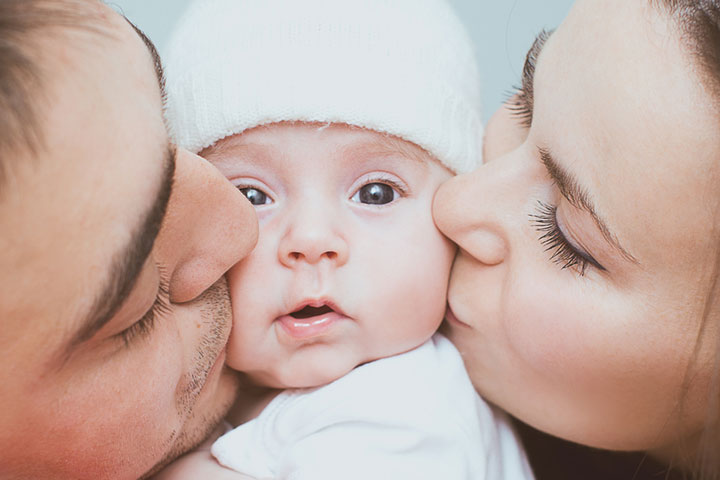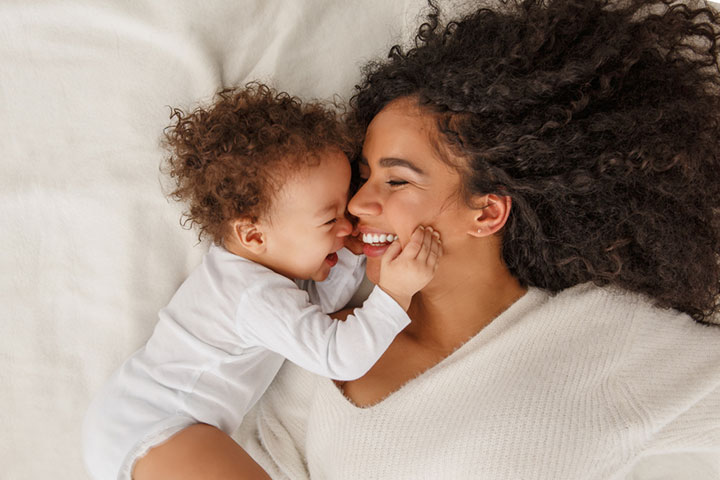
Most of us start looking for ourselves in our children the moment they are born. Seeing yourself and your partner in your child is a powerful and emotional bonding experience. Personality attributes like leadership and spirituality may have passed along with physical traits like eye and hair color. Despite the remarkable progress in genetics, our knowledge of the interplay between genes and the environment still remains incomplete. Whilst there is often a generational link between some characteristics, parents aren’t completely responsible for their offspring’s development. Read on to know more about what factors affect the looks and behavior of your little one.
1. The Environment
Our offspring may pick up habits from us that we don’t consciously teach them, but only by being around us. Usually, the two factors interact with one another. The ability to play an instrument is a prime example of environmental learning. Studies have also shown that those with perfect pitch typically began learning music before the age of 6, whereas just 3% of those who began voice lessons after the age of 9 have perfect pitch, indicating that one’s singing voice is affected by both heredity and training (1). It’s easy to assume that a child’s intelligence and creativity are fixed at birth; but even a talented kid needs a nurturing environment to reach their full potential.
2. Dominant Traits
Until recent discoveries, scientists estimated that humans possessed as many as 100,000 genes. However, humans have close to 25,000 genes only (2). It has been shown that the vast majority of genes serve several functions, often by switching between or amplifying the effects of other genes. Few features can even be associated with just one gene. Nonetheless, certain traits are more likely to be passed down to future generations than others.
3. Health Problems
It is common knowledge that a child experiences a health risk if there is a history of a certain disease in the family. Cystic fibrosis and hemophilia are examples of illnesses that may be traced back to a single gene mutation (3). For instance, if a child inherits a problematic CFTR gene from both parents, the child would likely have cystic fibrosis (4). Most diseases, however, include several genes and complicated features that may raise the risk of certain types but do not always guarantee that they will have the health ailment later in life (5).
4. Character And Personality
It’s well accepted in the scientific community that a child’s genes may influence their development and behavior, but the interplay between nature and nurture is more of a mystery. Recent research has shown that all personality characteristics have heritable components (6). Even if they are brought up separately, studies have shown that twins commonly share personality traits. Sometimes the similarities are eerily striking. The biological basis for a preference for a particular diet may even extend to the selection of that food. A recent study discovered that children who carry a taste gene associated with tolerance to bitterness prefer sugary soft drinks & cereals over milk and water (7).
5. Looks
The parent-child physical resemblance is the most obvious. If one parent has brown eyes while the other possesses the recessive blue eye gene, the offspring will likely have brown eyes because brown is a dominant characteristic. Yet, no one can say for sure what the child’s eye color will be. Contrary to what one might expect from a basic dominant-recessive rule, there are instances in which two parents with blue eyes have children with brown eyes. In reality, several genes interact to determine a characteristic.
Consider the hair color. An offspring will have brown hair if the father has the dominant brown hair gene and the mother carries only the recessive blond hair gene, but some of the offspring will be blonde. The reason is that the offspring will receive both sets of genes, so they can mix with blond genes via their parents to create blonde-haired offspring. Yet, if your child is born with red hair, don’t blame the stork! A combination of genes can lead to many different outcomes. There is also a chance that a child might blame either of the parents if he starts balding. The dominant gene causing male-pattern baldness is inherited from both parents, contrary to common perception (8).
What will your baby look like and be like is a question that all parents are excited to know. This is probably why parents try to determine who has the baby taken after the moment they are born. However, it is important to know that a lot depends on how you bring your children up. So what is the trait you would want your child to have from you? Let us know in the comments section.





